How do you build a hyper-car?
In short - invest billions into development, testing, tuning, and then once you think you have the recipe just right, tool a factory to actually build the thing.
We can’t show you the development process – no one can – it’s an area where carmaker's must succeed in defining themselves and their product, and all make's do their up most to ensure it’s done in private.
But thanks to Buggati, Driven has been given a glimpse into the final stage of the process – production.
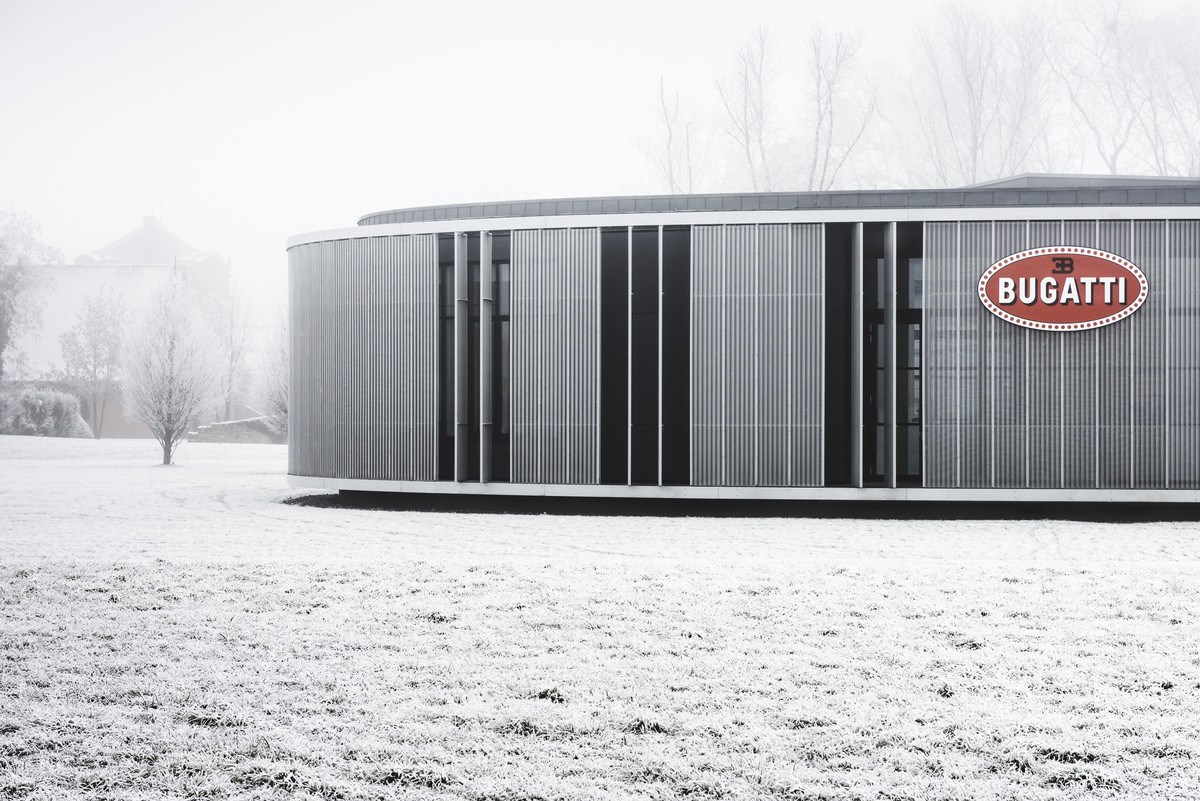
Over a decade ago Buggati single-handedly created the modern hyper-car segment with the Veyron. Featuring a spec sheet that no rival could match in terms of spec, price, or awe, the Veyron re-defined the premium sport market – and now Buggati have moved the segment even further with their latest creation – Chiron.
Production of the Chiron is now well underway. Currently, 12 cars are taking shape in the French facility in Molsheim, nicknamed the ‘Ateller’.
Bugatti plan to deliver the first vehicles within the first quarter of 2017, building a maximum of 70 units per year. On average, six months pass between the start of production and delivery of a Chiron.
A team of 20 employees are tasked with assembling the world’s fastest, most powerful production car from more than 1,800 individual parts, all by hand.
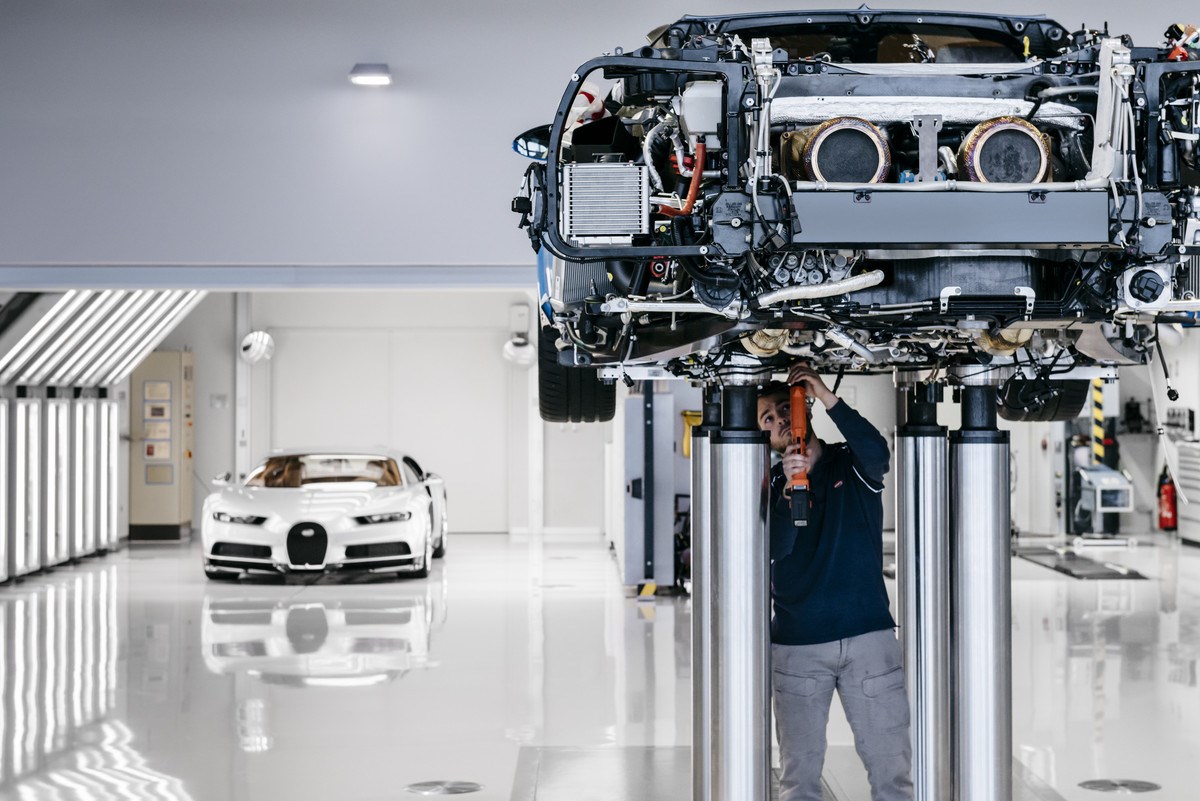
The first step is the configuration of the vehicle, which is completed by the customer and a designer from Bugatti. Each Bugatti is unique and is manufactured in accordance with the customer’s personal wishes.
There are 23 topcoat colours and eight carbon variants form the basic range for the exterior.
In the interior, customers can choose from leather in 31 different colours or Alcantara in eight colours, as well as 30 stitching, 18 carpet and 11 belt colours.
If that range doesn’t meet the customers’ requirements, Bugatti will develop their own personal hue, stitching and embroidery.
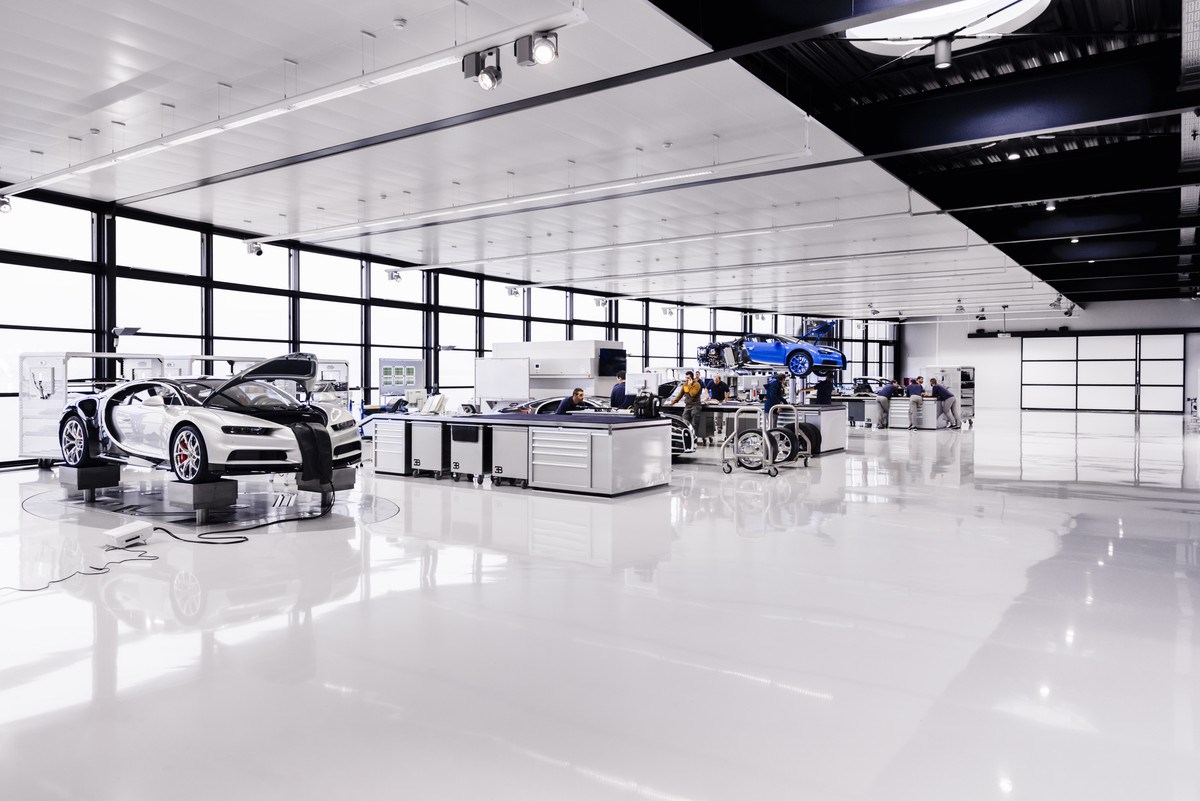
Once configuration is completed, a production slot will be assigned to that customer’s vehicle, the parts needed are ordered, and upon arrival the starting signal is given for the assembly of the Chiron to begin.
At Bugatti no conveyor belts or robots will be found. People work at stations, as in the workshop of a Formula One team. All in all there are 12 stations.
Christophe Piochon, Member of the Bugatti Board of Management and logistics, is the man tasked with ensuring production processes run smoothly.
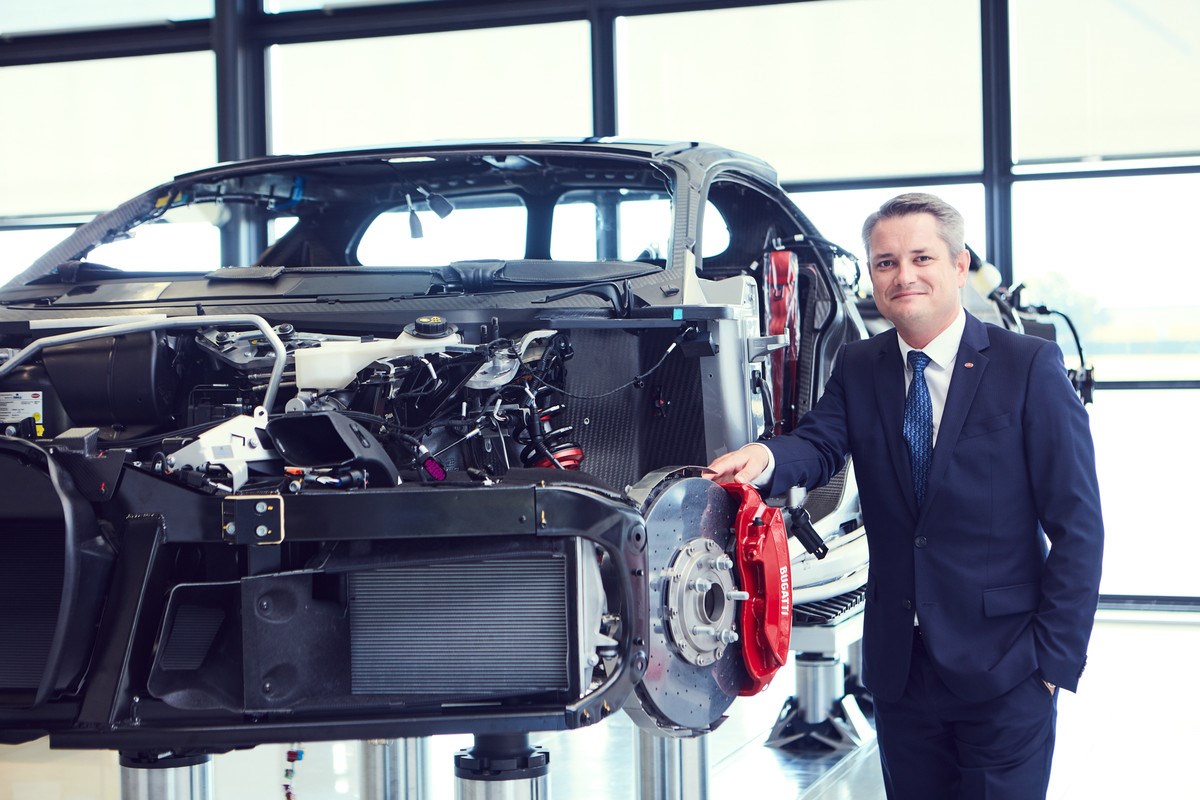
First, the powertrain is prepared for assembly. This arrives pre-assembled from the Volkswagen Group engine plant in Salzgitter, where specialists build the 1479 hp engine in a pilot hall equipped exclusively for Bugatti.
At the same time, a similar procedure is applied to the new 7-speed dual-clutch transmission which has been made bigger and stronger to accommodate the high power figures.
At the second station, the powertrain is installed on the chassis. Thanks to the increased use of carbon and other lightweight materials this unit weighs 628 kilograms, no heavier than the Veyron's powerplant.
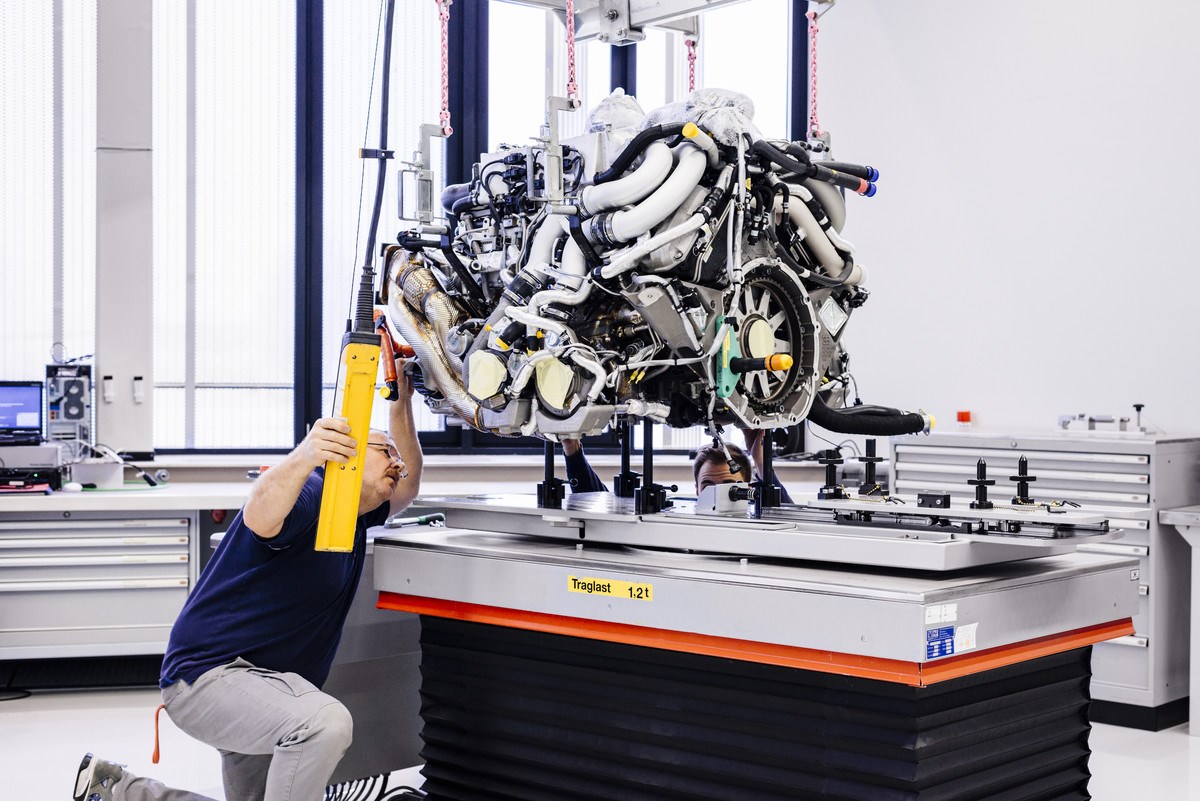
There are two chassis building platforms. At each station, three employees spend about one week on the assembly of the chassis.
In contrast to a conventional production line worker, each of these employees must be in a position to assemble the entire chassis, including the rear end, monocoque and frame.
The rear end of the vehicle is built round the powertrain. At the same time, the monocoque and the front end are joined together and equipped with the wiring harnesses required.
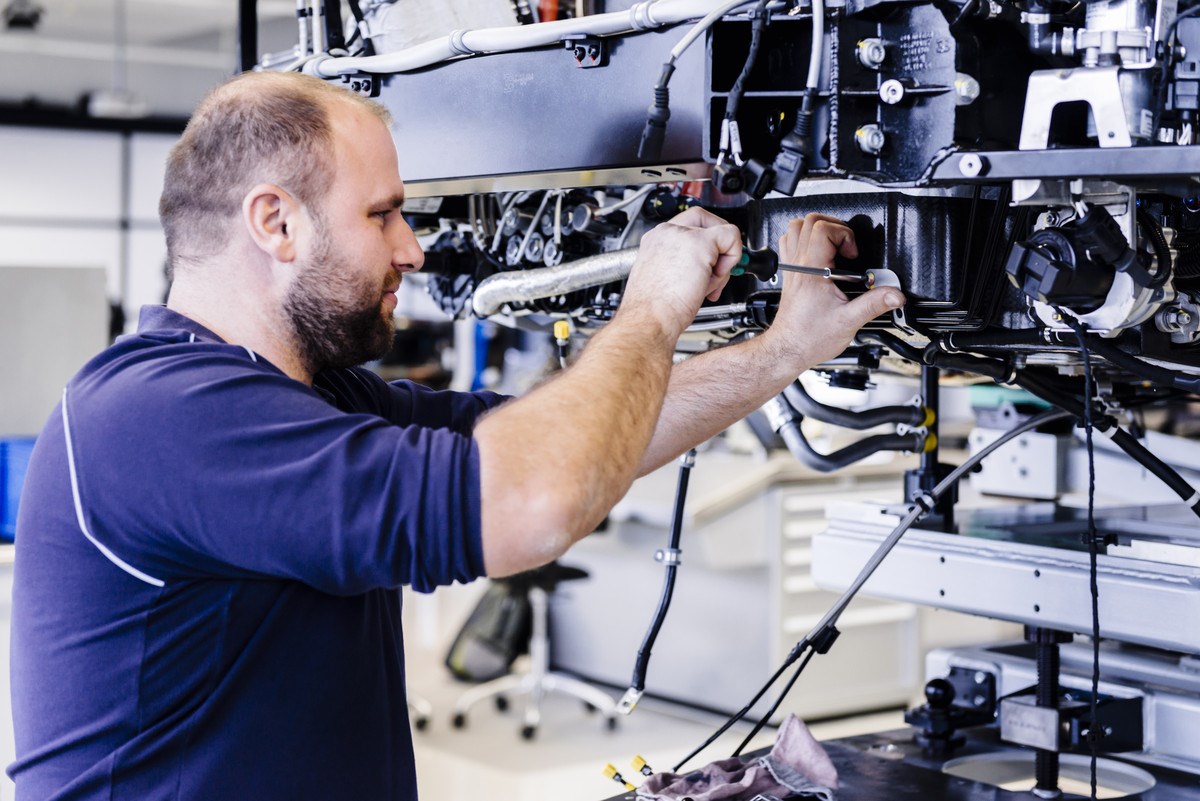
The pipes connecting the engine at the rear with the radiators at the front are also installed.
The vehicle is equipped with three water pumps, one large pump for the high-temperature cycle and two smaller pumps for the low-temperature cycle.
Cooling water pipes have the same diameter as a fire brigade’s spray lance and the flow rate is correspondingly high.
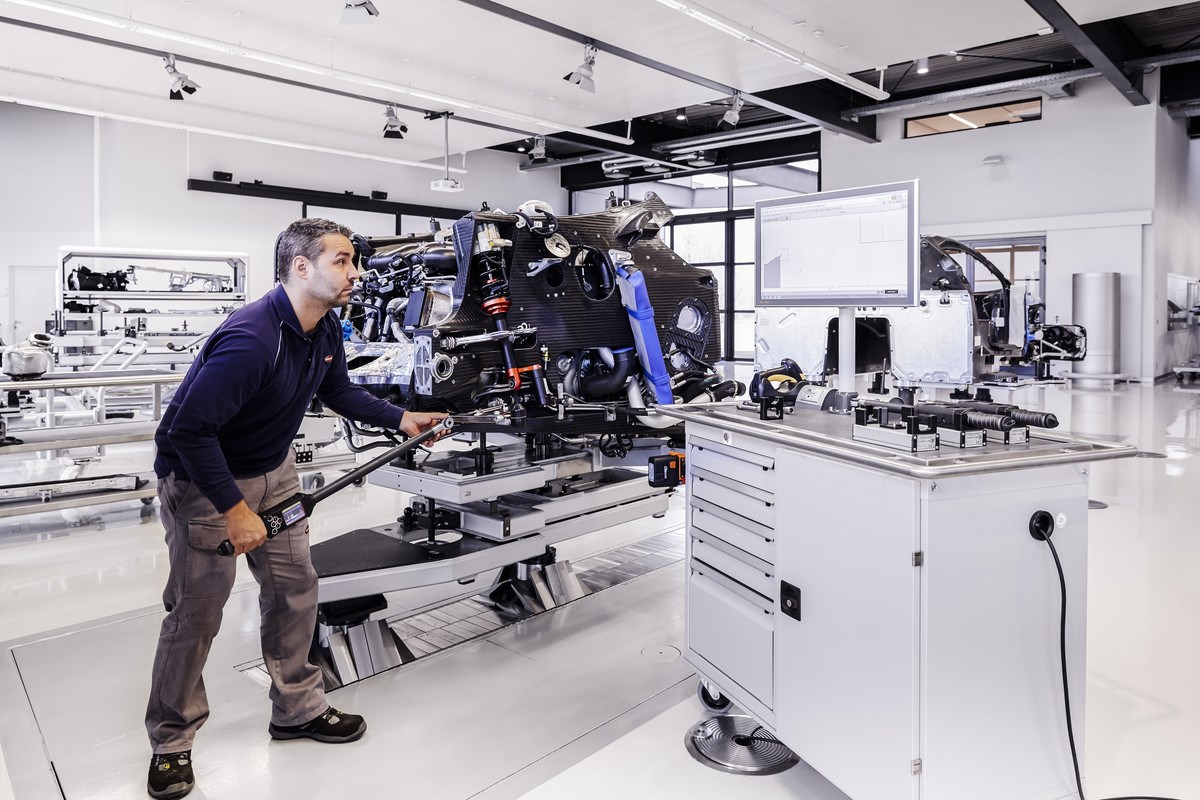
The only electronic tool used in chassis assembly is the new EC nutrunner system.
This allows a data curve of each bolt tightened on the chassis to be stored on a computer connected to the system, which then gives the assembly worker a signal when the right torque value is reached.
There are more than 1,800 bolted joints on a Chiron, with documentation required for 1,068.
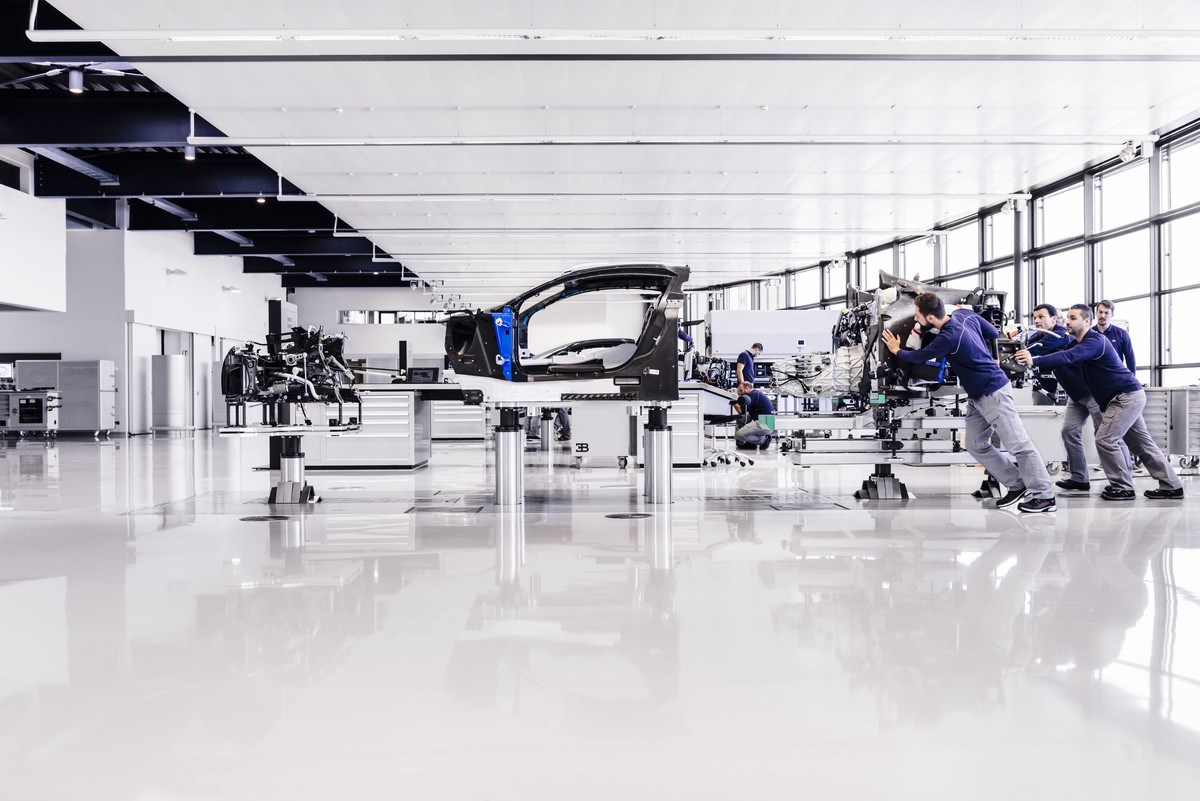
The high point of chassis assembly is definitely the marriage – the operation of joining the monocoque and the rear end.
14 titanium bolts, weighing 34 grams each, ensure that the bond between the two units is durable and extremely strong.
Finally, four wheels are bolted to the chassis and it then rolls forward to the next station – the filling unit, where all the operating fluids are filled into the vehicle.
The coolant is filled in under vacuum which is maintained for 10 minutes in order to test the coolant cycle for any leaks again. This is where the 16-cylinder engine is started in the vehicle for the first time.
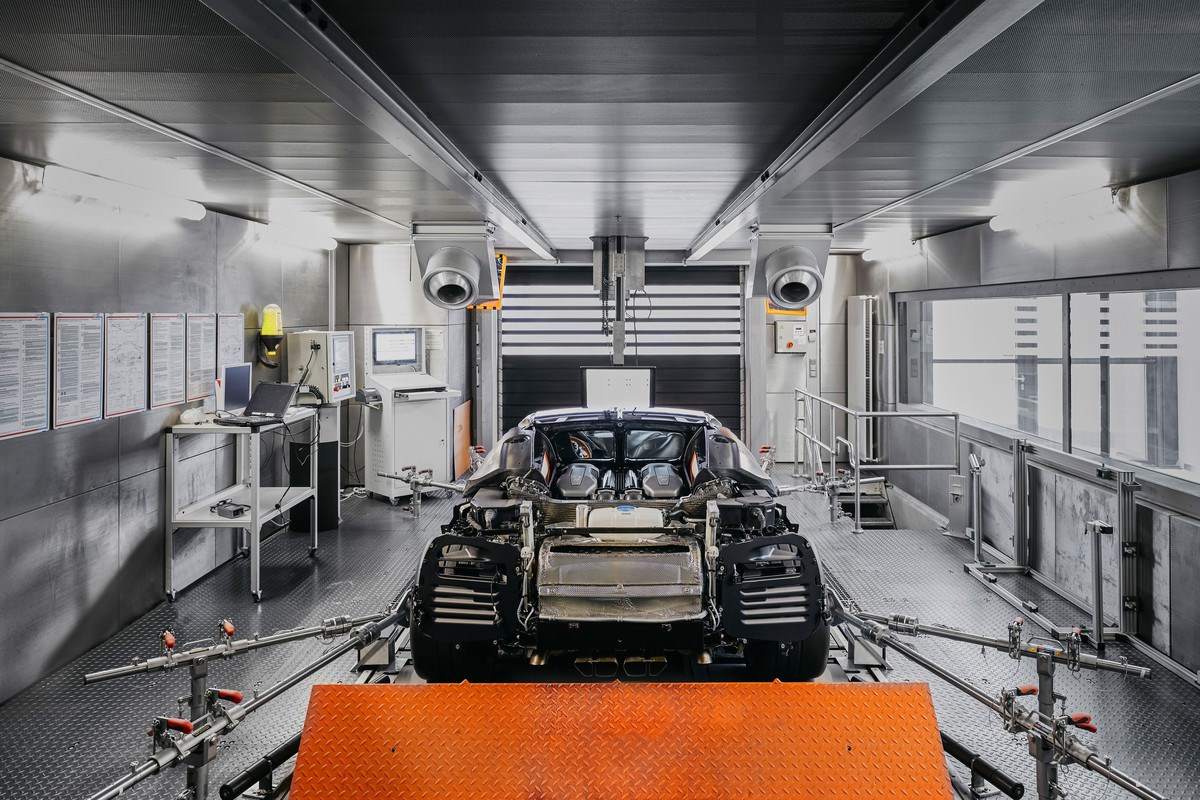
Now the Chirion can be taken to the all-new rolling dynamometer, specially developed to accommodate the 1479 hp and 1,600 Nm of torque.
The new engine is so powerful that it can produce electricity with a current of up to 1,200 amps during operation. Bugatti feeds the excess power generated to the local grid in Molsheim.
When the Chiron has passed all its tests on the rolling dynamometer, it is fitted with its exterior skin at the following station. All exterior parts are installed on the vehicle.
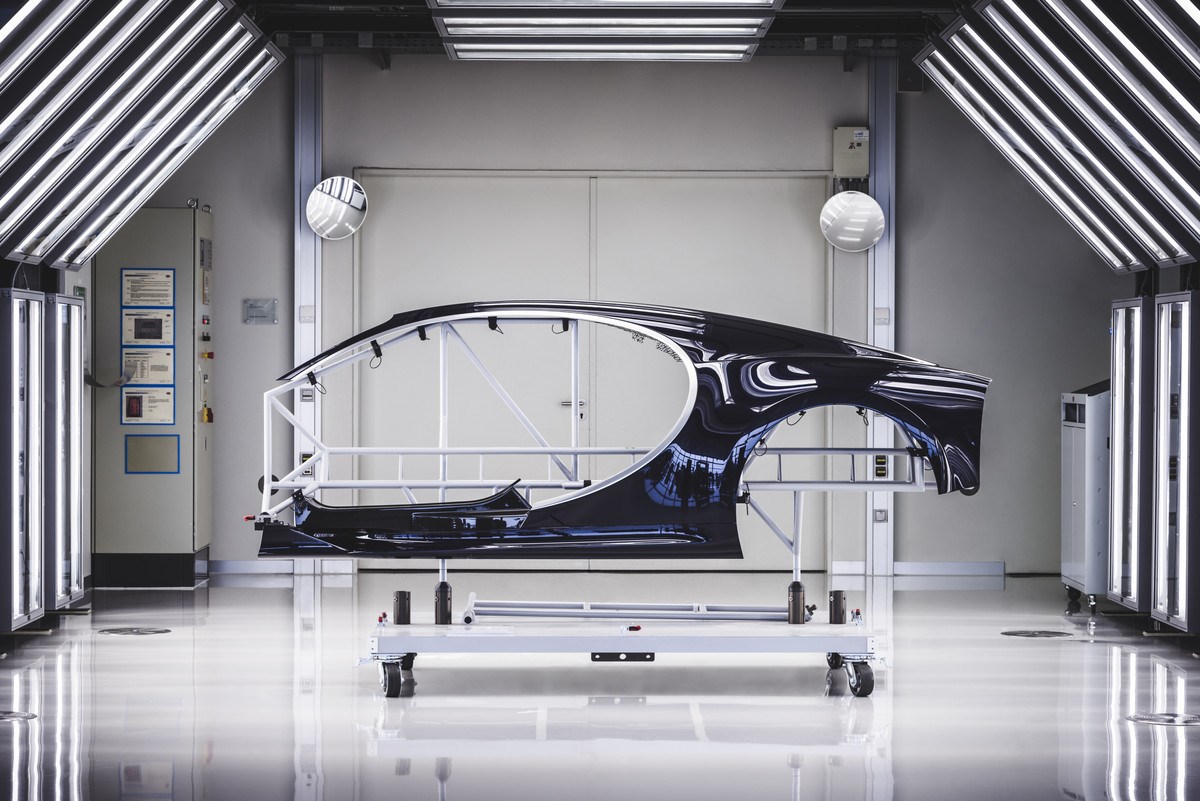
It takes between three and four days before the body parts have been installed on the Chiron and the gaps and joints have been precisely adjusted.
The next stage is a water test. Here, the Chiron is exposed to monsoon rain of varying intensity for 30 minutes to show that there are no leaks. The interior fittings are only installed when this test has been completed.
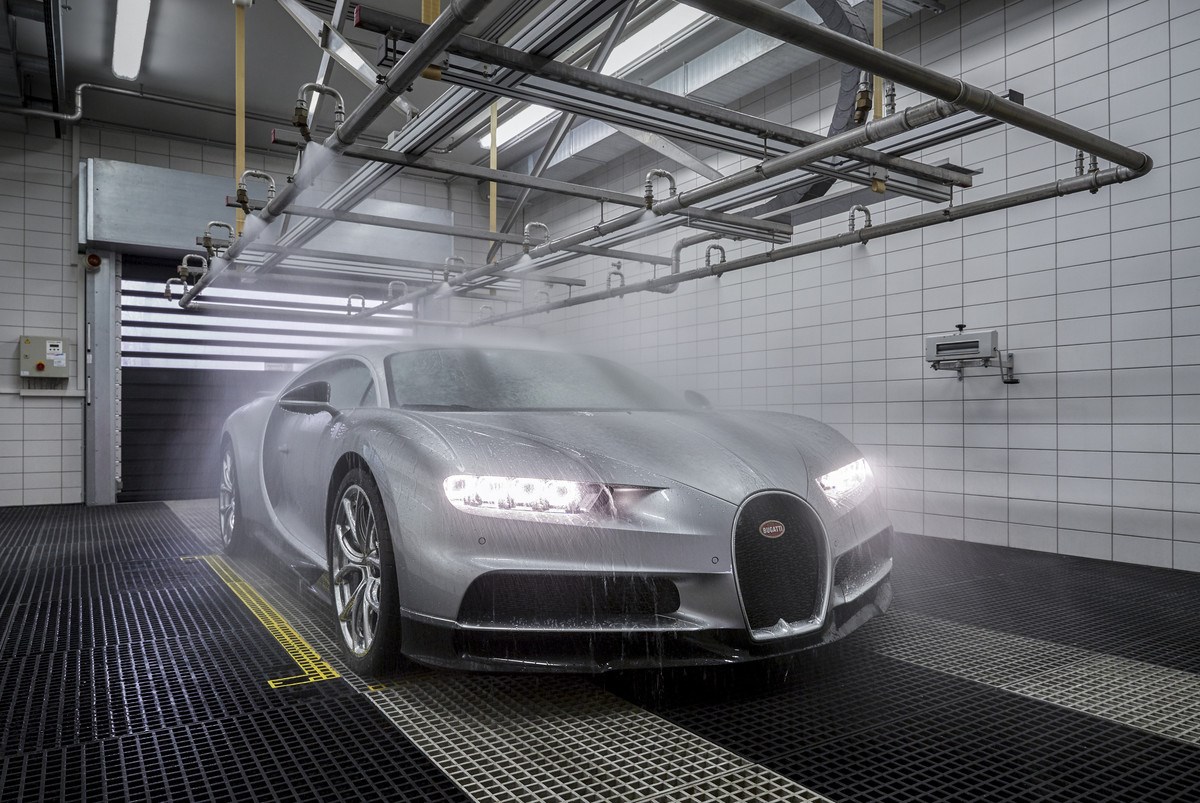
Here, two team members make sure that all the parts are installed in the right place in the interior of the Chiron, a process that normally takes about three days.
When the interior has been completed, the Chiron is prepared for its test and final inspection drive.
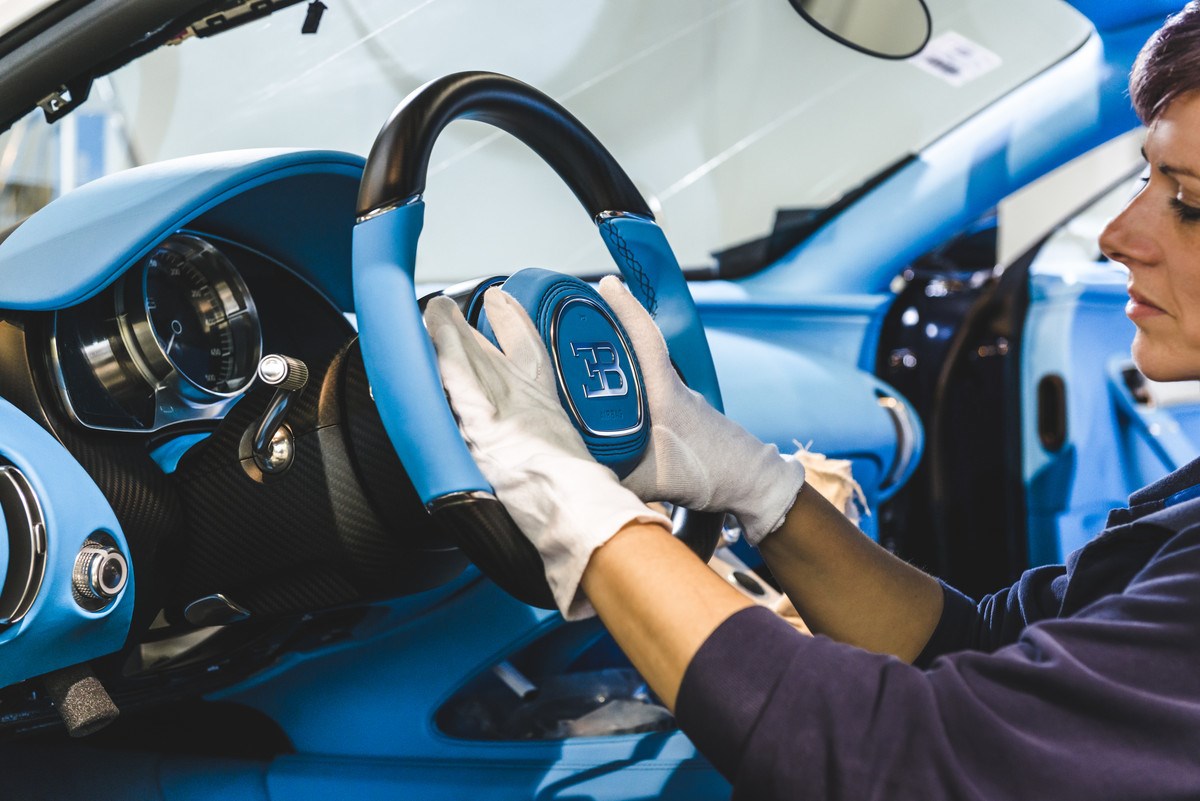
During the test drive the Chiron is driven 300 km through the Vosges to the airport in Colmar, where it completes test of functions requiring speeds in excess of 250 km/h on the runway.
To protect the body the entire super car is covered by a strong transparent plastic foil.
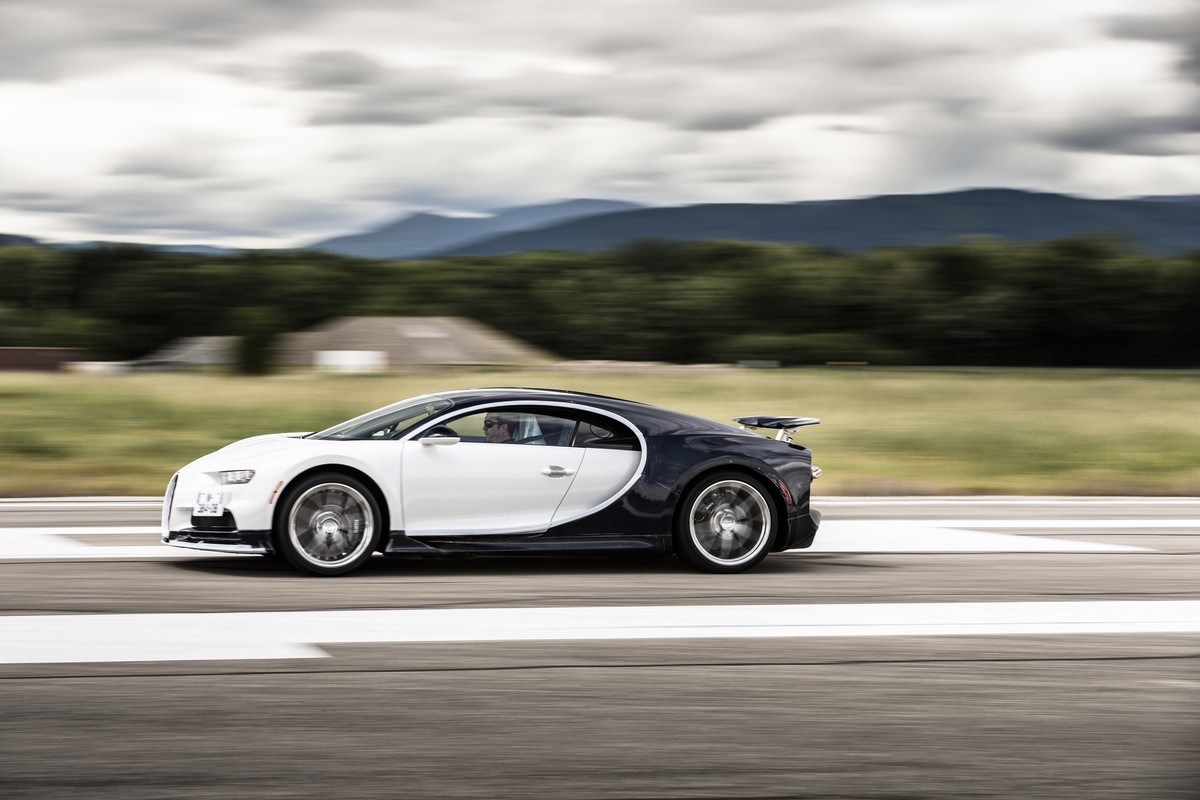
At this stage, the Chiron is transferred to the paint booth, where it is prepared for the finish. All the protective foils are removed and the vehicle is then cleaned and polished. The cosmetic preparation of the Chiron takes two days before it is transferred to the light tunnel.
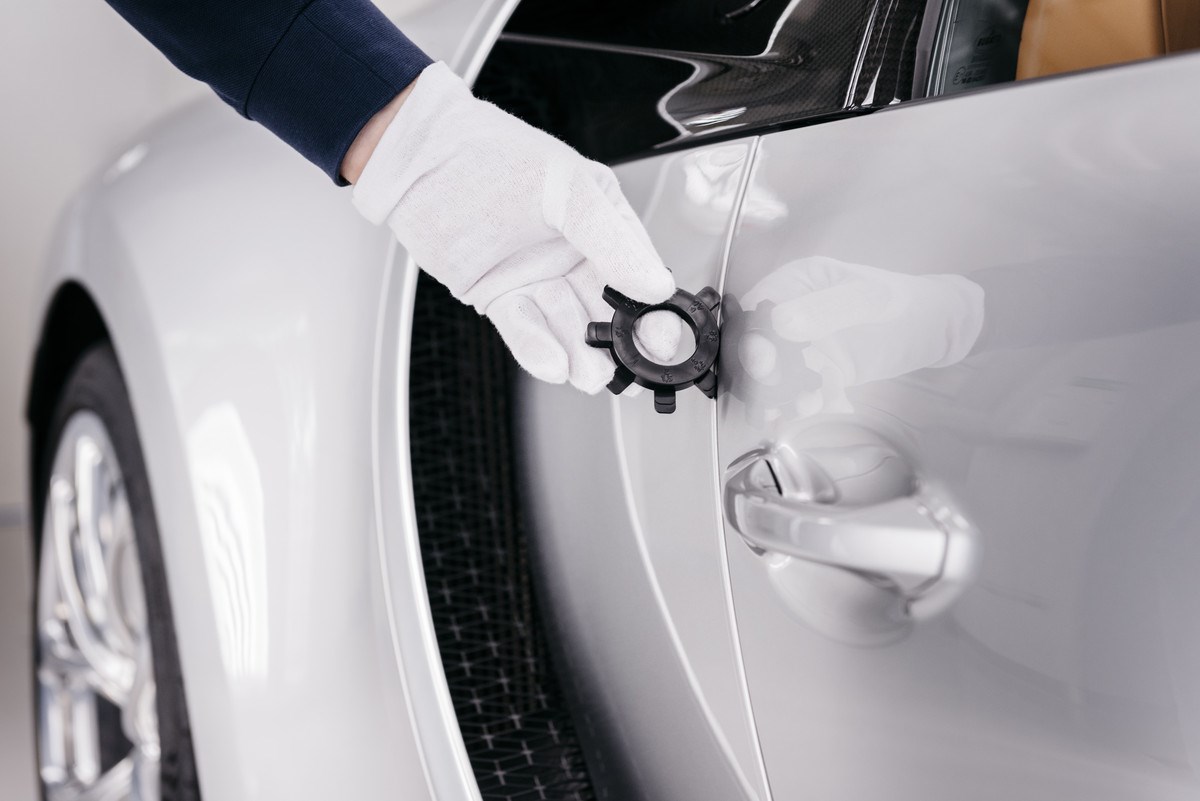
When the auditor in the light tunnel has given his final approval of the finish, Christophe Piochon meets the Heads of the Sales, Quality Assurance and Customer Service Departments for management approval.
Only when the managers are satisfied with the condition of the vehicle can an appointment for handing over to the customer be arranged.
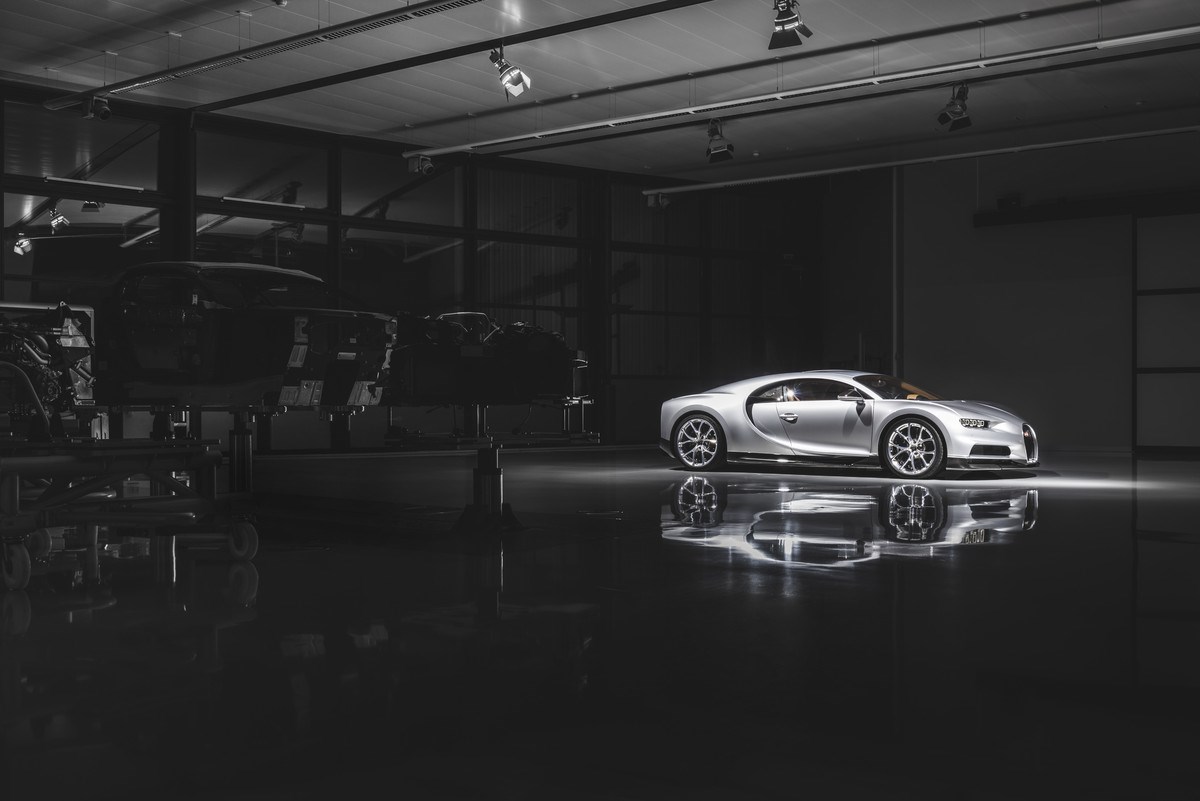
Bugatti Chiron
Price: $3,600,000 (starting price)
Engine: 8.0 Litre W16, quad turbocharged, 1479 hp
Transmission: 7-Speed automatic
Kerb Weight: 1,996 kg























